 Walking New York City. 2009
Walking New York City. 2009
Back in May I posted some gallery exhibits I wanted to see in New York...
Gallery Picks
Last weekend I spent the day with my friends Randall and Lisa walking all over the city and we were lucky enough to hit just about everything on our list. I walked around that day with only my Olympus OM-1 and some Kodak 125 Plus-X film. I am in love with the results I got and am determined to continue using lot's of that wonderful Plus-X film for the rest of the summer. I want to have plenty of negatives to work with when I get back in the darkroom in the Fall.
First stop was ICP to check out the
Avedon show I had read so much about. I was pretty sure this would be an excellent exhibit, but I still held onto a general skepticism about it being
just fashion photography. How wrong I was! This show is memorizing. Avedon was a master at his craft and the images are just captivating. The gallery room
Paris at Night is one of the most beautiful gallery displays I have ever seen, and really shows off the genius of Avedon's work. Do not miss this show if you go to New York.
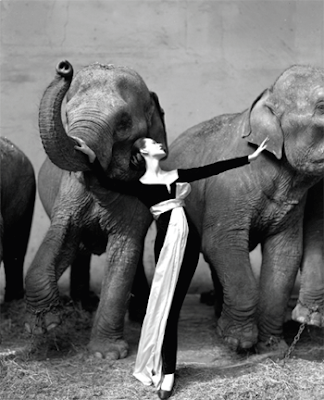 dovima with elephants. richard avedon
International Center of Photography
dovima with elephants. richard avedon
International Center of Photography
1133 Avenue of the Americas at 43rd Street
New York, NY 10036
Avedon Fashion @ ICP
Next we headed down to
Chelsea and caught a really great mix of exhibits.
Chuck Close at
Pace Wildenstein Gallery was a display of eye popping tapestry work. This gallery, with it's incredible natural light and dramatic high ceilings, was the perfect venue for the amazing work being shown.
 Chuck Close Tapestry
Andrew Bush
Chuck Close Tapestry
Andrew Bush's Vector Portraits at
Yossi Milo Gallery is a really fun exhibit of medium format images shot from a moving vehicle of other drivers on California Freeways. The images are gorgeous and have an ethereal quality to them. They appear completely staged, and yet they are shot at high speed from the freeway.
 Andrew Bush. Vector Portraits
Yossi Milo Gallery
Andrew Bush. Vector Portraits
Yossi Milo Gallery
We weren't at all impressed with
The Edge of Vision: Abstraction in
Contemporary Photography at
Aperture Gallery. It is a group show with little cohesion and nothing new to offer.
But there is a wonderful display of
Paul Strand's work in the library room, a gorgeous space with a wonderful view of old Chelsea buildings. I could spend an entire day just sitting in the comfy chairs at Aperture Gallery reading the thousands of books from the shelves. The only thing missing here is a coffee bar.
 View from Aperture Gallery Library
Aperture Gallery
View from Aperture Gallery Library
Aperture Gallery
The highlight of the day was
Urban Stonehenge at
Deborah Bell Gallery. Stunning group of black & white photographs of sunsets in New York all taken at precise moments at the summer solstice over a 20 year time span. The photographer,
Sid Kaplan, happened to be in the gallery while we were there. One of those fantastic moments when you have undivided conversation with an artistic genius and walk away so grateful to have had the opportunity. Kaplan took the time to carefully explain how he crafted the images in this show, as well as discussed other projects he has worked on over a long brilliant career, including Mummer photography in Philadelphia. He promised to call me the next time he is in Philly for a Mummer's Parade. I can't imagine a more fascinating day than one spent with Sid Kaplan on New Years Day in South Philly.
It also must be said that another reason this was the highlight of the day for me is
Deborah Bell herself. I have mentioned this before on this blog, but it is worth repeating. In so many galleries, when you walk in, the staff is sitting behind large imposing counters and they barely acknowledge your presence. Deborah Bell goes out of her way to welcome you and there is no doubt that she is delighted that you are visiting her gallery. This is the most visitor friendly gallery in New York City!
deborah bell photographs
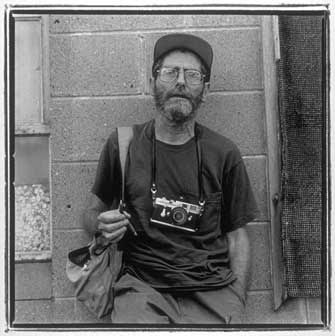 sid kaplan. by howard christopherson
sid kaplan. by howard christopherson
here is a nice bio on Sid Kaplan from Icebox Gallery in Minnesota...
Sid Kaplan was born in the South Bronx of New York City in 1938. At the age of ten, he saw a black and white print develop in a darkroom. The experience hypnotized him and he began his life-long career of photographing and printing. Kaplan loves the hunt and the search for meaning that only street photography allows, and he is equally enamored with what he calls "the magic" of making a black and white print.
This exhibit has no particular theme, nor is it a retrospective. Instead, it is an eclectic mix of color and black and white prints created over several decades in New York City, Philadelphia, Minneapolis, and on the roads of America. The exhibit includes a variety of framed images along with several stereo pieces photographed in three dimensions. Kaplan refers to these as Œstereopticon experiments‚ because of the way they are made.
In 1952, Sid Kaplan began his only formal education in photography at The School of Industrial Arts, a NYC vocational high school. At the same time he was going to meetings at the Village Camera Club, which served as a refuge for members of the recently defunct Photo League. His first showing of his photography was there. At one of the photography trade shows he met Weegee for the first time and through fate, they would be running into each other till he died in 1968. After graduation, Sid began his career working in the photography industry. Kaplan paid his dues working at many dead end minimum wage photography jobs. After 6 years he had gained enough skill to be hired by Compo, a well-known custom lab in NYC. There he printed exhibition and book prints for several Magnum photographers; Philippe Halsman, Robert and Cornell Capa, and Weegee. There Kaplan met Ralph Gibson, who later introduced him to photographer Robert Frank. Kaplan began printing for Robert Frank that day, and still continues that relationship.
Sid Kaplan has told me that the biggest highlight of his career was the day when he took a break from the darkroom with Mr. Frank. The two of them walked to a local bar for a beer when they ran into another photographer who lived next door, W. Eugene Smith. They invited him to join them and they spent the evening together swapping stories and comparing their royalties from the Minamata and The Americans. "This reinforced my feeling that photography was best practiced as a gentleman's hobby like Lartigue or Steiglitz. I never wanted it to become just a job where editors' art directors and deadlines ruled; that would make me crazy and demoralized. Printing other people's work gave me the bucks to pursue my hobby and photograph what I want to without
Kaplan sometimes calls his photographs 'snaps'‚ a slang term from the forties. "If I never take another snap again I will still have more than I can print." Sid says with a smile. Images in the show are of people and places, some are shot from a moving car, resulting in blurred and grainy scenes of the road taken in various parts of the country. Other images included where made during repeated visits over the past twenty five years to a single Mummer's club in Philadelphia. Many places are now reduced to nostalgia and may be only a distant memory to the locals over the age of 60. interference." he says with a bearded grin.
Sid Kaplan: Urban Stonehenge
Icebox Gallery
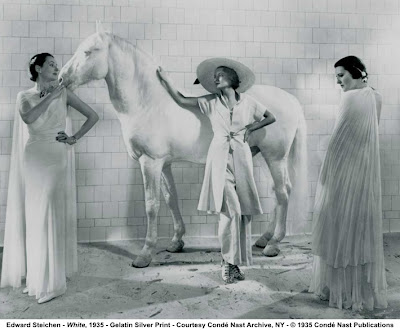 Edward Steichen. 1935
Edward Steichen. 1935 Richard Avedon. 1955
Richard Avedon. 1955 David Bailey. 1968
David Bailey. 1968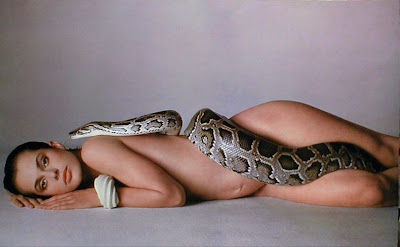 Richard Avedon. 1981
Richard Avedon. 1981
 Walking New York City. 2009
Walking New York City. 2009 dovima with elephants. richard avedon
dovima with elephants. richard avedon Chuck Close Tapestry
Chuck Close Tapestry Andrew Bush. Vector Portraits
Andrew Bush. Vector Portraits View from Aperture Gallery Library
View from Aperture Gallery Library sid kaplan. by howard christopherson
sid kaplan. by howard christopherson

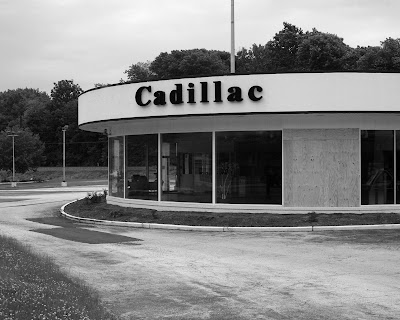






 messages to Ashley. 2007
messages to Ashley. 2007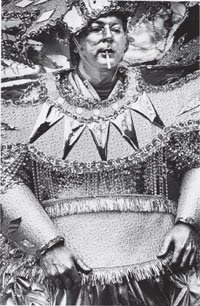
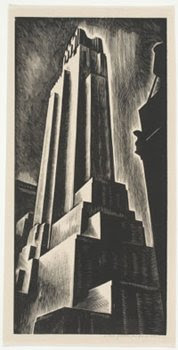










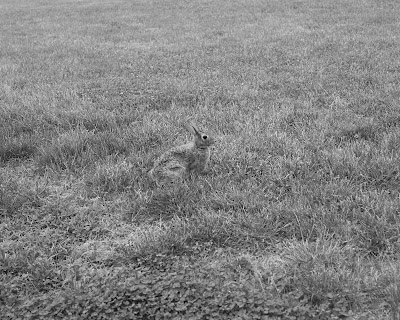 rabbit in grass . 2009
rabbit in grass . 2009
 Cadillac Dealership. Jenkintown, Pa. 2009
Cadillac Dealership. Jenkintown, Pa. 2009